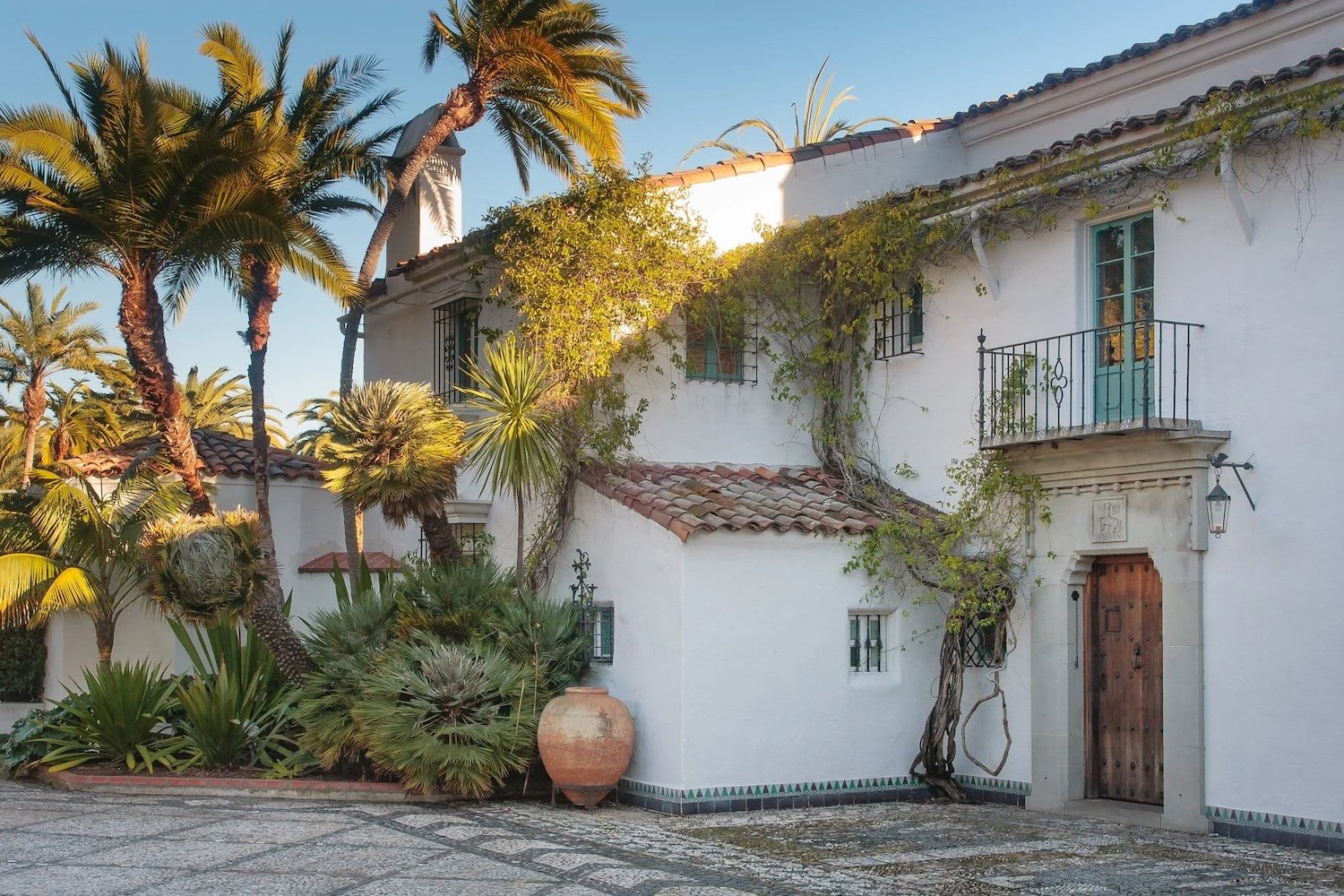Casa del Herrero: The Jewel of Montecito
Walk along East Valley Road in Montecito and you might miss it at first glance—hidden behind mature oaks, stone walls, and a canopy of filtered light. But step beyond the gates, and you enter another world entirely: Casa del Herrero, one of the most extraordinary estates not just in Montecito, but in the entire country.
Designed by George Washington Smith and completed in 1925, Casa del Herrero is often called the finest example of Spanish Colonial Revival architecture in the United States. But that description hardly captures the experience of being there. The estate is a living composition—equal parts craftsmanship, artistry, horticulture, and cultural legacy. It is Santa Barbara’s architectural soul on display.
A House Built with Purpose
“Casa del Herrero” translates to House of the Blacksmith, a name chosen by its original owner, George Fox Steedman, an industrialist, engineer, and passionate artisan. Steedman didn’t commission a home; he commissioned a masterpiece.
Working alongside George Washington Smith and landscape architect Lockwood de Forest, he poured his artistic obsessions into every detail—from forged iron hinges and hand-carved doors to custom Talavera tiles sourced from Spain and Mexico. The result is a home that feels less like a residence and more like a museum of living craft.
Every arch, corridor, fountain, and courtyard was designed with reverence for Spanish precedent, yet thoughtfully adapted to Montecito’s Mediterranean climate.
Where Architecture and Craftsmanship Converge
Casa del Herrero is a whole sensory experience:
Whitewashed stucco walls glow against terracotta rooflines.
Exquisite Moorish, Andalusian, and Spanish details reveal themselves in patterns and shadow.
Rare antique furnishings collected by Steedman remain exactly where he placed them.
Tilework from the 13th to 18th centuries in Spain adds rich color and texture.
And everywhere you walk, you feel the handshake between architecture and nature.
Smith’s architectural mastery, Lutah Maria Riggs’ supporting work, and de Forest’s gardens come together in perfect harmony. This is Spanish Colonial Revival at its absolute peak—restrained, elegant, and deeply rooted in historical accuracy.
Gardens That Tell a Story
The estate’s 11 acres of gardens are as significant as the home itself. Designed in collaboration with plein-air landscape designer Lockwood de Forest and expanded by later horticulturalists, the gardens are arranged in formal and informal layers:
Andalusian-inspired courtyards
Moorish water features
Citrus orchards that nod to Montecito’s agrarian past
Rare specimen plants
Garden “rooms” designed for reflection and gathering
All of it feels like a gentle wandering through a storybook—each turn revealing something new, each view meticulously composed.
A House Frozen in Time
Unlike many historic homes that modernize over time, Casa del Herrero remains almost entirely as it was in the 1920s and ’30s.
When the Steedman family donated the estate in 1993, they insisted it be preserved as a cultural and educational landmark. Because of that stewardship, the home still contains:
Original furniture
Original blueprints
Steedman’s fully intact blacksmith workshop
His decorative arts collection
Period textiles, lighting, and hardware
It’s not just historic—it’s living history—a time capsule of California’s Golden Age of architecture.
Why It Still Matters
Casa del Herrero represents everything Santa Barbara values in architecture:
craftsmanship
regional identity
indoor-outdoor living
reverence for landscape
timelessness
In an era of fast builds and disposable design, the estate is a reminder of what happens when architecture aspires to art rather than trend.
At Montecito Valley, we often reference Casa del Herrero as the north star of design on the Central Coast. It embodies the principles we cherish: authenticity, craftsmanship, proportion, and a lifestyle shaped by the land itself.
Visiting Casa del Herrero
If you live locally, take the tour. If you’re visiting, make it your first stop.
Location: 1387 East Valley Road, Montecito
Tours: By reservation only (guided tours)
Website: casadelherrero.com
Best Time to Visit: Spring and fall, when the gardens are at their fullest
Pro tip: Bring a camera. Light hits this house differently throughout the day, and every angle is photogenic.
A Symbol of Montecito Living
Casa del Herrero isn’t simply a historic house—it’s a philosophy. A reminder that great design is slow, intentional, handcrafted, and rooted in place.
If this architectural heritage resonates with you, we’d love to help you explore homes throughout Montecito and Santa Barbara that honor these same principles—courtyards, craftsmanship, Spanish Revival detailing, and timeless California living.
Ready to find a home with soul?
Reach out to begin your Central Coast home search, or follow us at @montecitovalley for more stories, design inspiration, and architectural deep dives.



